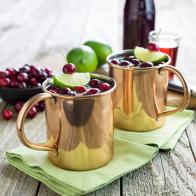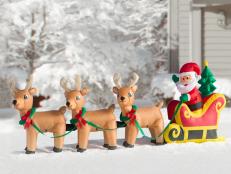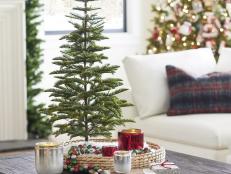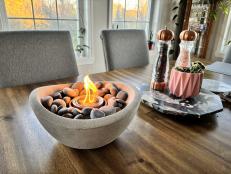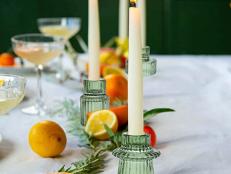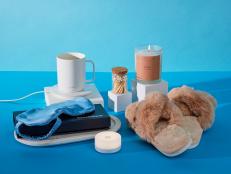How To Grow Schefflera
This easy-to-grow tropical makes a gorgeous houseplant with hand-shaped foliage that ranges from deep green to variegated cream and yellow.

Costa Farms
Sometimes called dwarf umbrella trees, schefflera arboricolas thrive in low to medium light environments but dislike direct sun.
Schefflera, a popular houseplant, is often called umbrella tree because its leaves radiate from a central stem, creating a drooping, fan shape that resembles an umbrella. Another reason people call it umbrella tree? It's easier to say and spell than "schefflera." That's pronounced shuh-FLARE-uh, by the way.
Here's what you need to know about growing schefflera.
Schefflera 101
Schefflera is a genus of tropical plants native to Taiwan and China. We're going to focus on Schefflera arboricola, also known as dwarf umbrella tree or dwarf schefflera. Hardy in USDA Zones 10 to 12, schefflera plants are usually grown indoors as houseplants. They can go outdoors in the spring and summer but need to be brought indoors for the winter.
Schefflera arboricola grows very fast outside, getting 10 to 25 feet tall at maturity. Scheffleras grown as houseplants are much slower growing, staying in the 3- to 6-foot range.
30 Indoor Plants for Low Light 31 Photos
These houseplants are perfect for homes and offices with little or no natural sunlight.
All parts of the Schefflera — leaves, stems and roots — are slightly toxic to humans and toxic to dogs and cats if ingested. Steer clear of this houseplant if you have pets or small children who might eat it.
Botanical Name: Schefflera arboricola
Common Names: Schefflera, umbrella tree, dwarf umbrella tree, umbrella plant
Bloom Time: Summer if it's outdoors, but when grown indoors it doesn't bloom. Grow this one for its foliage.
USDA Hardiness Zones: 10 to 12
Caring for Schefflera
Schefflera likes bright, indirect light. Put scheffleras by a bright window indoors. If you move a potted schefflera outside for the summer — and you should, to give it a season of peak growing conditions put it under a patio or porch roof. Direct sun will burn the leaves.
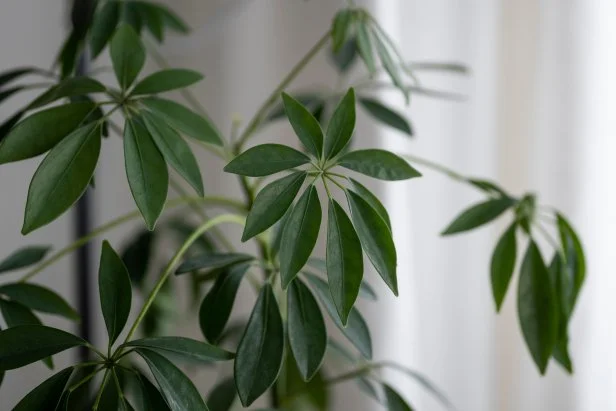
Shutterstock/Books and peonies
Put scheffleras by a bright window indoors. Move a potted schefflera outside for the summer to give it a season of peak growing conditions, but put it under a patio or porch roof. Direct sun will burn the leaves.
Scheffleras need soil that is well draining. They can get root rot in heavy soil. They like loose soil that has lots of organic material mixed into it.
Water regularly during summer. Spray the leaves with water weekly to keep them from drying out. Let the soil dry out between waterings. Cut back on water in the winter when the plant is dormant. Overwatering a schefflera will kill it.
Fertilize schefflera twice a week during the growing season. Scheffleras are heavy feeders in the summer and need extra nutrition. Use a liquid fertilizer made for potted plants or slow-release pellets.
Prune scheffleras occasionally. Keep them from getting too spindly, which they will do if they don't get enough light. Lop off the parts that look overgrown and shape the plant. Scheffleras will grow back fast, and you'll have bushier, healthier plants.
Re-pot schefflera once a year. Give your plant fresh soil and more room for its roots to grow. You can keep your plant small and slow-growing by letting it get a little bit rootbound. But if the roots are creeping out of the drainage hole in the bottom of the pot and the plant is looking too big for its container, put it in a bigger pot.
Pests and Diseases
Schefflera can be prone to spider mites, aphids, white flies, mealy bugs, and scale. Even the hardiest tropical plants can struggle when they have to spend months indoors, away from their natural environment. If your schefflera plant gets an infestation, whip out the neem oil or insecticidal soap and spray the plant's foliage and blooms until all the bugs are gone. It will take a few applications and some patience.
Recommended Types of Schefflera
Here are some of our favorite schefflera types.
'Madame De Smet' has variegated leaves that are dark green, striped yellowy-white. It's a compact plant with dramatic leaves that stays small, under 3 feet, so it's an ideal houseplant.
'Gold Capella' has dark green leaves variegated with golden yellow patches. It's also a compact variety that stays under 3 feet.
'Luseane Ivory' has ivory-yellow variegation on dark green leaves that curl just a bit.
Dwarf Schefflera is a compact variety with dark green leaves. It can grow 4 feet tall and 4 feet wide.
Alpine Schefflera (Schefflera alpina) is a wild species that tolerates cooler conditions than other varieties. This schefflera is hardy to USDA Zone 7, so it can be grown outdoors in more places than traditional scheffleras.





